
|   |

|   |
Pravaasi - A feast for the eyes and the soul - Baishali Raychaudhuri Photo Credits: Santhosh Selvaraj from Pratibimb Photos June 8, 2024 Attending the "Pravaasi - In Search of a home-away-from-home" Kathak repertoire by Anupama Srivastava and the InSyncKathak dancers at the San Francisco International Arts Festival on May 12 was an emotional experience laden with a feast for the eyes. This show was co-produced by the Asian Pacific Islander Cultural Center and was a part of the United States of Asian America Festival 2024. I put emotional before visual because in this case, it truly was that. Having been introduced to Kathak at a very tender age, the characteristics of this particular dance form, the accompanying music, the costumes, the postures and the mudras have always quenched my soul, but that thirst could be satiated at any Kathak performance or recital. Those would mostly take me through the different essential pieces of Kathak, like aamad, tukras, parans, vandana and tatkars punctuated by padhants or recitations. Apart from the technical pieces, there would be "katha" or stories of Lord Krishna and Radha, Shiva or Nataraj, Goddess Durga or even the fierce Kali, Lord Rama and Sita. We could be flowing with the Ganges or become one with Nature, visualizing flowers bloom, birds fly, deer fleet, peacocks dance or a whole forest come alive through the dances. 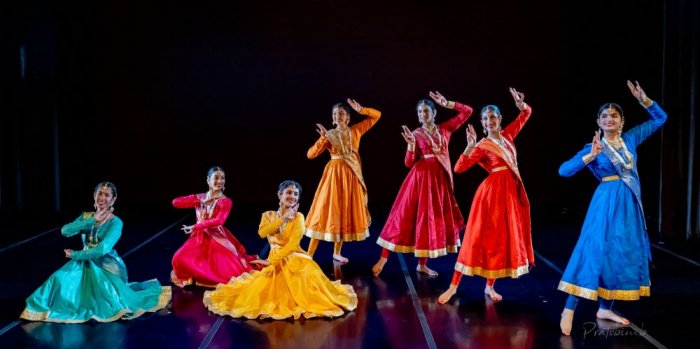 Wanderlust But Pravaasi offered us something much beyond that. It spoke to that part of my brain that I try not to use very often, lest it halts me from going about my daily duties in this "Pravaas" or the land where I chose to build my home. It touched a cache of my heart that I keep tucked away, the cache that has "My Roots" written on it, forcibly kept down there by my daily chores and responsibilities, only called to the surface by the occasional nostalgia or a jarring news from back home, like a death in the family. 'Pravaasi' brought that migrant in me to the forefront for an unforgettable forty five minutes, along with my pioneer and trailblazer and explorer and self-doubter and settler personas. The repertoire started with a dazzling performance by the most promising young adult dancers of InSyncKathak, who depicted the wanderlust of a young person, a feeling similar to that felt by an abhisaarika nayika eager to meet her beloved in an unknown place. The excitement and fear, the forceful calling from yonder versus the safety of home, the mental tug of war was depicted beautifully through the piece. 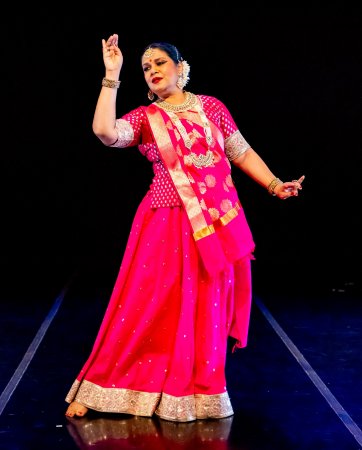 Separation The second piece depicting the separation anxiety felt by a migrant at the time of leaving the home for the first time was performed beautifully by the Artistic Director Anupama Srivastava. She chose the most appropriate thumri penned by Nawab Wajid Ali Shah for this sentimental piece, "Babul mora naihar chhuto hee jaye" sung by Jagjit Singh and Chitra Singh. This was the most emotional piece of all, and the heart-wrenching emotions flowing out of Anupama truly drenched the audience. A very personal story could not have been told any better without words. I think there was not a pair of migrant eyes in the audience that were dry during this piece, because it was so relatable. It was her story, and mine, and every other adult's, in some form or the other. The dance was aptly choreographed to show all the little and big things that had to be left behind. The choreography was simple, to balance the emotionally heavy song that all Indians, especially women leaving their father's home for their husband's, hold very close to their hearts. 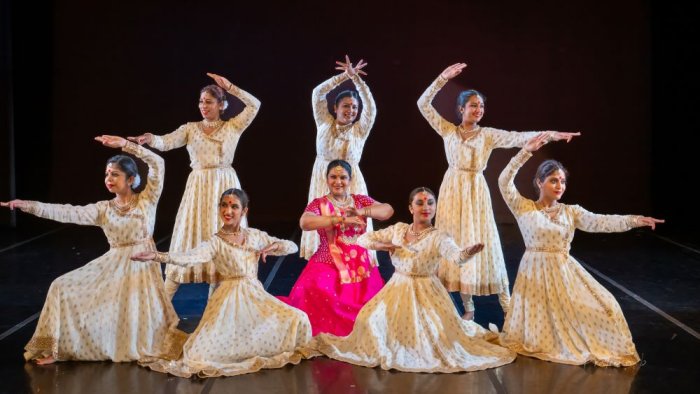 Identity Crisis Next came a truly unique dance where the protagonist displayed her angst in trying to fit in her new society while holding on to her roots and identity, sometimes falling behind and at other times able to influence others and lead, sometimes succeeding and sometimes failing. The other dancers supported this story line by being the community that overwhelmed, discouraged and belittled the protagonist, but finally accepted her diversity, uniqueness and what she brought to the table. This piece was accentuated by white supertitles on a dark background that reflected the feelings the protagonist was going through, like voices in her head. It reminded us of conversations we have had with our children, us being the fresh-off-the-boat immigrants, and them being the natural citizens, and yet being looked upon differently because of their race and color. 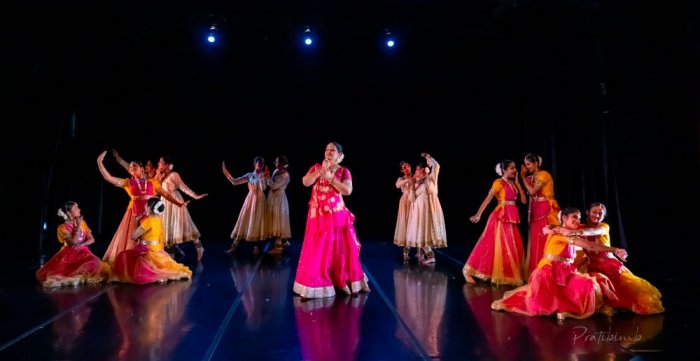 Nostalgia Even though we finally fit in, sometimes we put our current life aside and suffer from nostalgia. Whether life is good here or otherwise, we still miss all those things we had left behind. The fourth piece depicts the bitter sweet nostalgia presented in Jagjit and Chitra Singh's beautiful Ghazal "Woh kagaz ki kashti, woh baarish ka paani". We feel like we could give up everything, all our riches and wealth, to go back to our childhood homes and neighborhoods, the monsoons of our childhood, the fairy-tales told by wrinkled old grannies. That world was so beautiful, pure, innocent and untainted by worries. While the protagonist goes on a nostalgic journey, small groups of dancers play out all the things she is missing. It is a multi-piece dance, and the present and the past come together beautifully to tell the story in flashback style. Where does the migrant mind ultimately find peace? In assimilation. That's where the concluding piece of the repertoire took us. Very aptly, a Tarana was used to depict this assimilation. A Tarana, an indispensable part of a Kathak repertoire, has been an amalgamation of two dance forms - the devotional dance offered to Gods in temples giving way to a form used to entertain in a royal court. Historically as well as culturally, it embodied a juncture, where two different races or cultures met and enriched each other. What better way to capture assimilation in Kathak than with a Tarana? And hence in the last piece, we saw a rhythmically complex dance infused with graceful story-telling, choreographed by Reva Srivastava. The merging of two cultures was brought to life through two separate groups dancing in unison forming scintillating stage patterns, dressed in the two traditional costumes of Kathak, lehenga and angarkha, and was a fitting finale to the production. 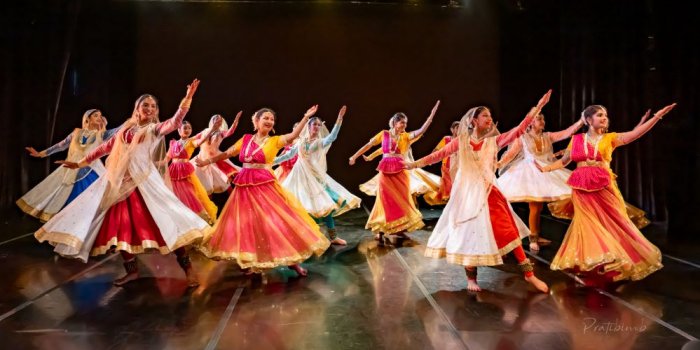 Assimilation Anupama chose to bare her heart and tell her story, a story that is close to all "Pravaasi" hearts, and told it in a most artistically fabulous way using all the elements of Kathak as the medium. The excellent choice of music, costumes, lighting, choreography and expressions were all conducive to that artistic vision and came together in the most memorable way. The immigrant in all of us goes through the emotions of Wanderlust, Separation Anxiety, Identity Crisis, Nostalgia and ultimately Assimilation. Sometimes they are on the forefront of our minds and sometimes we push them back so that we can go about daily chores, but to see these emotions we have experienced over the years playing out in front of our eyes in a dazzling display of perfectly synchronized intricate movements was a moving and unique gift from Anupama Srivastava and the InSyncKathak dancers and an experience to be cherished. 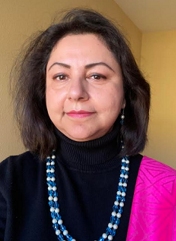 Baishali Raychaudhuri is a computer engineer and art connoisseur based in the San Francisco Bay Area who has lived in the US for thirty two years. She is a trained Kathak dancer and Hindustani semi-classical vocalist of different genres of Bengali songs, bhajans and ghazals. |